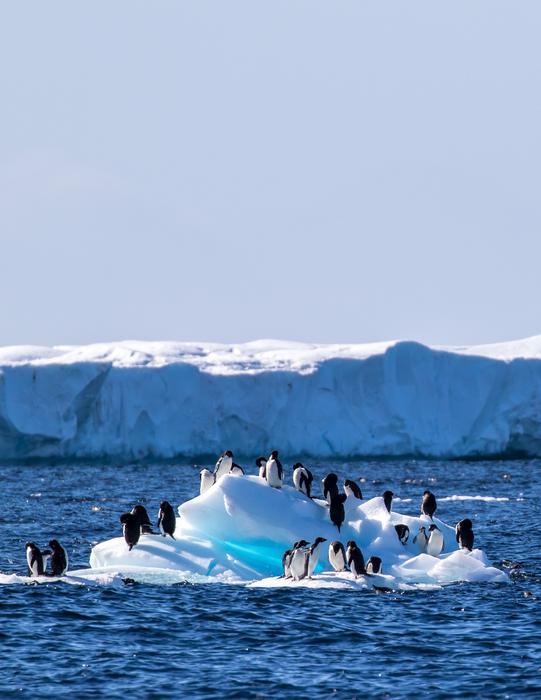EMBARGOED UNTIL: 6, NOVEMBER, 2023, 3 PM US EASTERN

Credit: Annie Schmidt/Point Blue
EMBARGOED UNTIL: 6, NOVEMBER, 2023, 3 PM US EASTERN
A groundbreaking study published in the Proceedings of the National Academy of Sciences underscores the pivotal role that seasonal Antarctic sea ice plays in the annual molting periods of Adélie penguins. Despite the relatively large amount of sea ice still available in the Ross Sea, researchers have discovered a potential bottleneck in the penguins’ annual cycle, which could be exacerbated as the climate continues to change.
Unlike most penguin species, the majority of Adélie penguins are thought to carry out their annual molt (when they replace all their feathers to prepare for the long winter) on sea ice, away from breeding colonies, making this period challenging for researchers to study. This study, led by Dr. Annie Schmidt of Point Blue Conservation Science in Petaluma, California, utilized data from geolocating dive recorders deployed year-round on 195 adult penguins in the Ross Sea from 2017-2019. The resulting data enable the researchers to identify extended gaps in post-breeding diving activity, signaling the molting period.
Location data pinpointed two key molting areas. Satellite-based remote sensing data revealed that sea ice concentration during the molting period in the molting areas was notably low over the past five years, and has declined in the primary molting area since 1980.
Another significant finding was the positive correlation between annual return rates of penguins to breeding colonies and sea ice concentration in molting areas over the past 20 years; 2.4 to 4.8 percent fewer penguins returned with every 10% drop in sea ice concentration in the molting areas. This underscores the potential challenges penguins might face in the light of changing climate conditions.
“Our research sheds light on a facet of Adélie penguin’s life that was previously underappreciated,” stated Schmidt. “Understanding the intricate relationships between the environment, particularly sea ice, and all phases of the penguin’s annual cycle is crucial, especially in the context of rapid climate change.”
The research not only brings attention to the survival strategies of Adélie penguins but also emphasizes the broader implications of climate change on Antarctic ecosystems.
For further information, interviews, or to request a copy of the study, please contact:
Media Contact:
Zach Warnow
[email protected]
415-786-5285
Note: the lead authors of the study are currently in the field in Antarctica with limited connectivity, but may be reached by satellite phone through the media contact listed above.
Journal
Proceedings of the National Academy of Sciences
DOI
10.1073/pnas.2306840120
Method of Research
Observational study
Subject of Research
Animals
Article Title
Sea ice concentration decline in an important Adélie penguin molt area
Article Publication Date
6-Nov-2023




